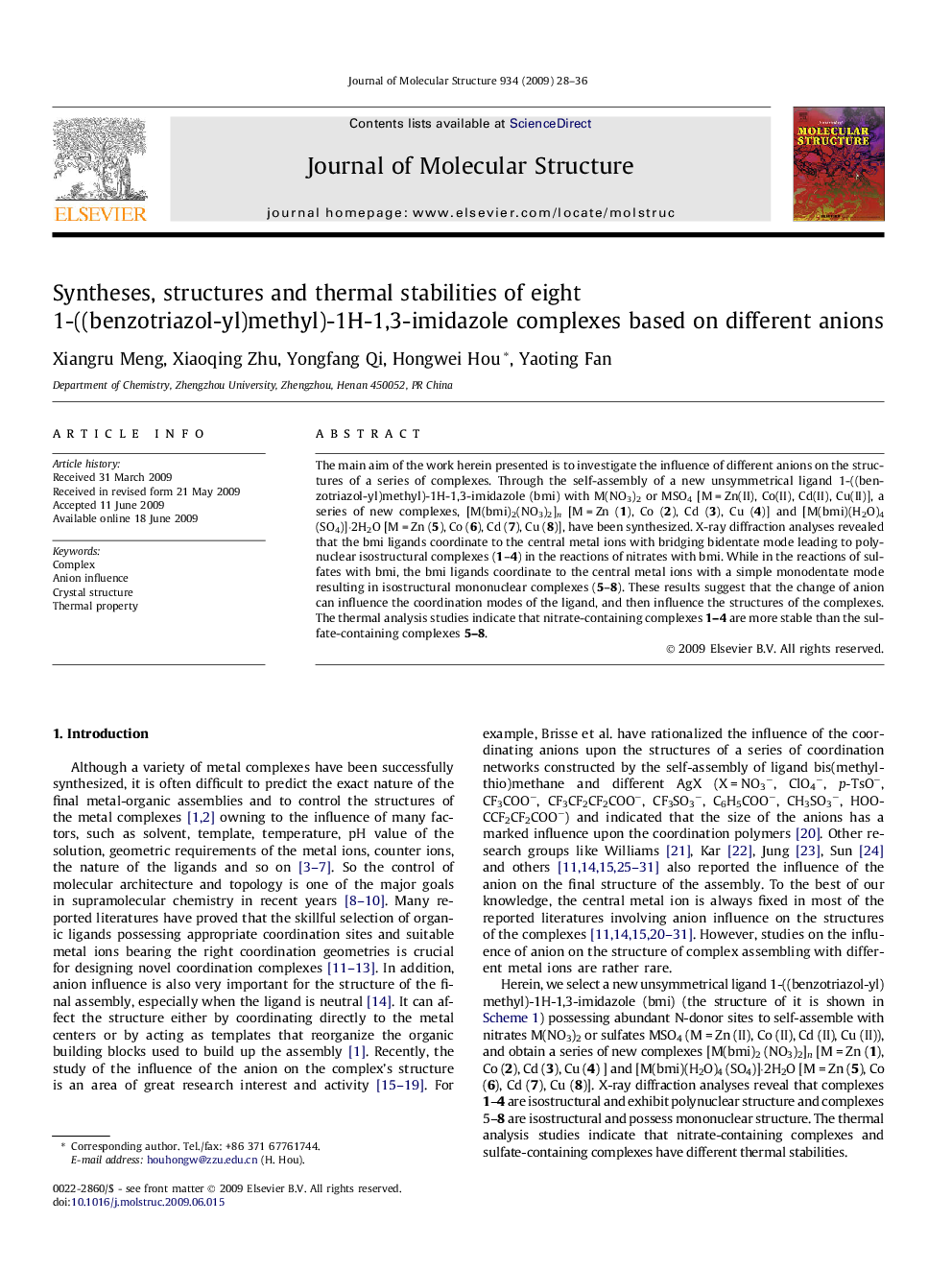| Article ID | Journal | Published Year | Pages | File Type |
|---|---|---|---|---|
| 1411332 | Journal of Molecular Structure | 2009 | 9 Pages |
The main aim of the work herein presented is to investigate the influence of different anions on the structures of a series of complexes. Through the self-assembly of a new unsymmetrical ligand 1-((benzotriazol-yl)methyl)-1H-1,3-imidazole (bmi) with M(NO3)2 or MSO4 [M = Zn(II), Co(II), Cd(II), Cu(II)], a series of new complexes, [M(bmi)2(NO3)2]n [M = Zn (1), Co (2), Cd (3), Cu (4)] and [M(bmi)(H2O)4(SO4)]·2H2O [M = Zn (5), Co (6), Cd (7), Cu (8)], have been synthesized. X-ray diffraction analyses revealed that the bmi ligands coordinate to the central metal ions with bridging bidentate mode leading to polynuclear isostructural complexes (1–4) in the reactions of nitrates with bmi. While in the reactions of sulfates with bmi, the bmi ligands coordinate to the central metal ions with a simple monodentate mode resulting in isostructural mononuclear complexes (5–8). These results suggest that the change of anion can influence the coordination modes of the ligand, and then influence the structures of the complexes. The thermal analysis studies indicate that nitrate-containing complexes 1–4 are more stable than the sulfate-containing complexes 5–8.
